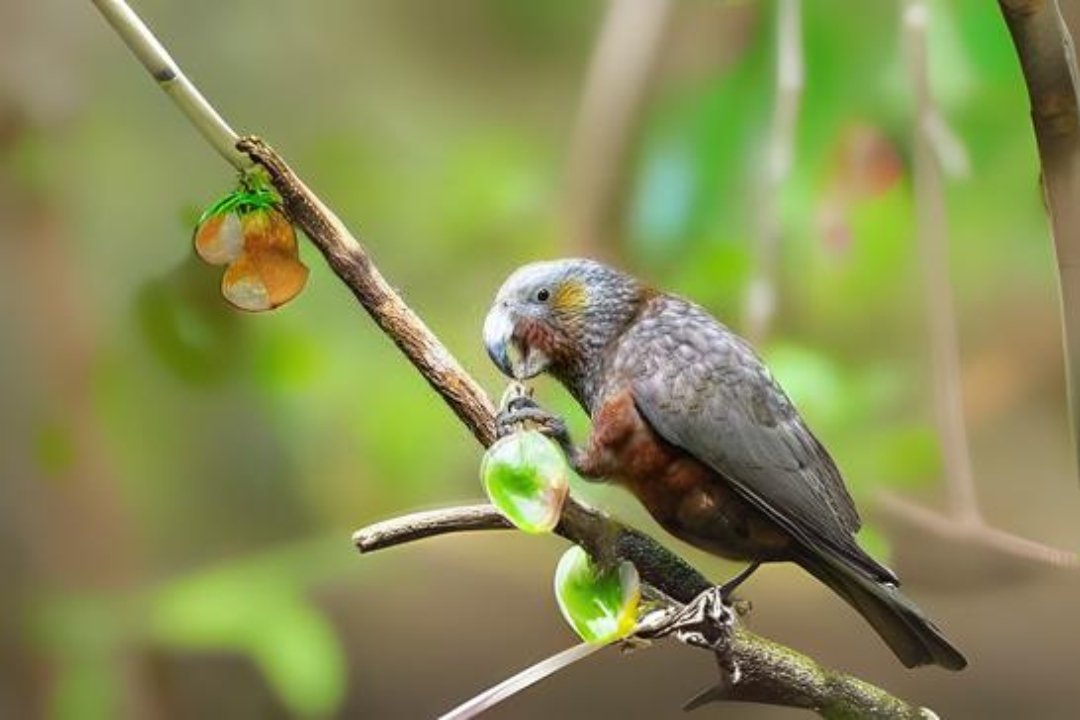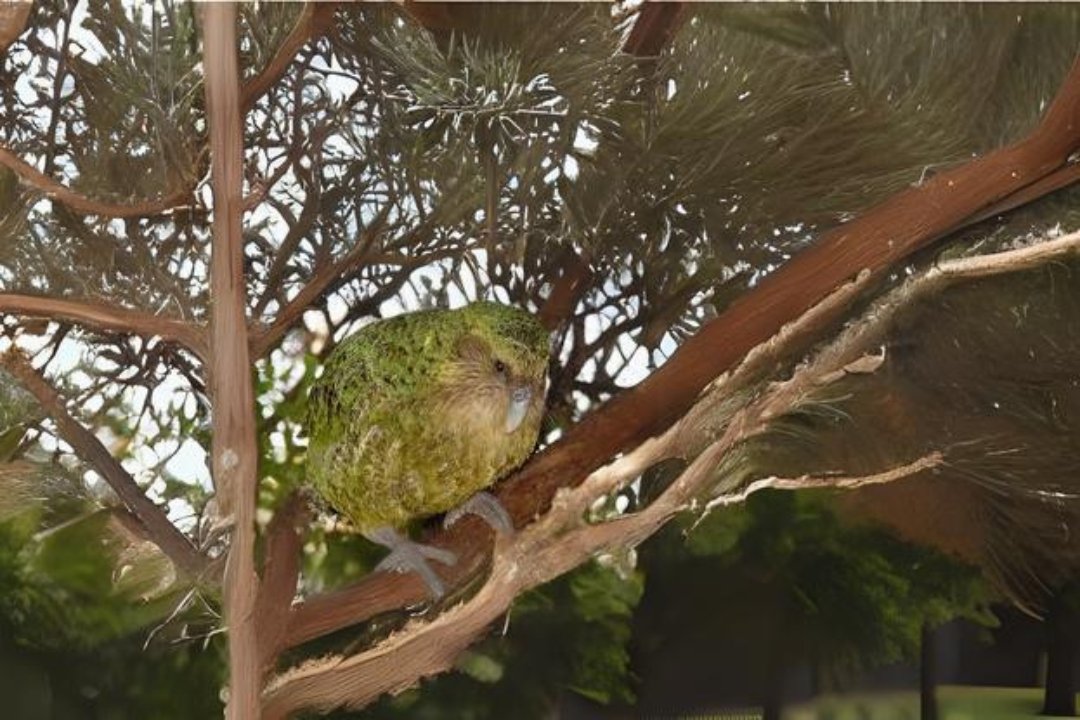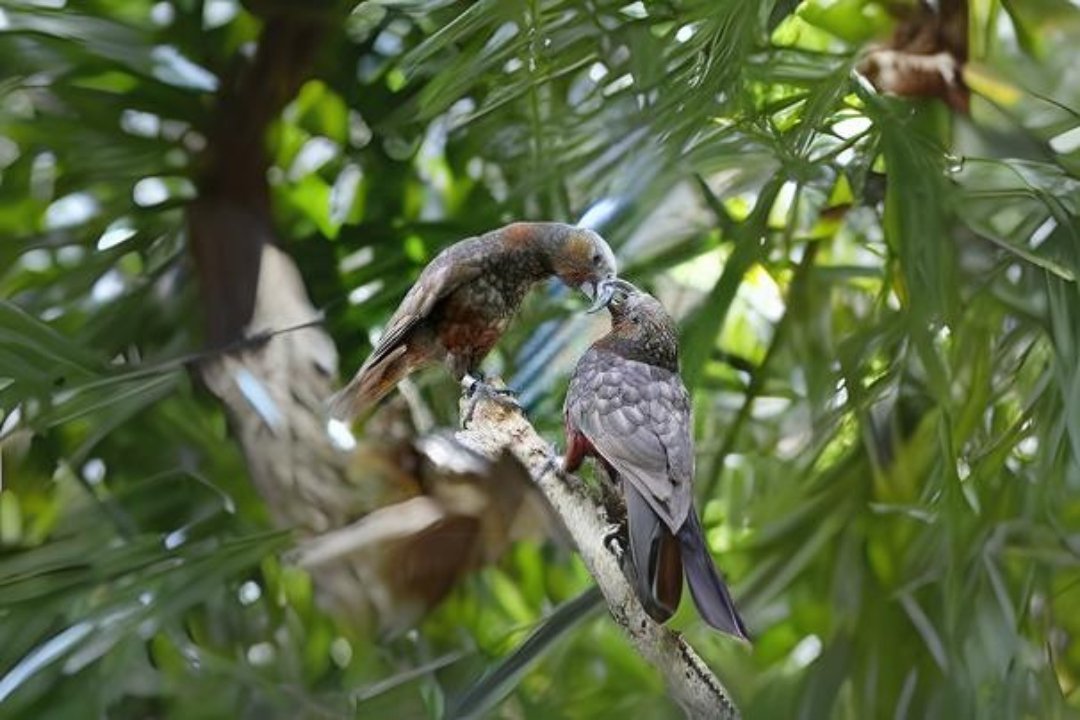Introduction to the Strigopidae Parrot
Strigopidae Parrot, a particular family local to the islands of New Zealand, enthrall with their different transformations, dynamic plumage, and social importance.
From the clever and naughty Kea to the nighttime, ground-abiding Kakapo and the amiable Kaka, these parrots typify the biological versatility and interesting developmental history of New Zealand’s avifauna.
Taxonomy and Classification
Strigopidae parrots have a place with the request Psittaciformes and comprise a one of a kind family inside this request, portrayed by their strong form, bended bills, and striking plumage. The family incorporates three surviving species: the Kea (Nestor notabilis), known for its olive-green quills and fun loving way of behaving;

the Kakapo (Strigops habroptilus), recognized by its greenery green plumage and nighttime propensities; and the Kaka (Nestor meridionalis), perceived for its shifted shading and versatile way of life across various environments in New Zealand.
Distribution and Habitat
These parrots occupy a scope of environments across New Zealand’s islands, from thick mild rainforests and snow capped locales to beach front fields and seaward islands. The Kea flourishes in the rough landscape of the South Island’s Southern Alps, where it displays amazing knowledge and flexibility to cruel bumpy circumstances.
The Kakapo, basically imperiled and fundamentally found on hunter free islands, has been painstakingly figured out how to guarantee its endurance, depending on thick woodlands and nighttime propensities for assurance.
The Kaka, appropriated all through both North and South Islands, exhibits adaptability in living space use, from local backwoods to metropolitan regions, displaying its capacity to coincide with human-altered scenes.
Strigopidae parrots show particular actual variations fit to their separate surroundings. The Kea, with its olive-green plumage featured by radiant orange underwings, has areas of strength for a, bill ideal for getting into tree husk and examining novel items — a transformation vital for its scrounging conduct in snow capped and subalpine environments.
The Kakapo, described by its greenery green quills and strong form, depends on disguise and ground-staying propensities to avoid hunters, displaying transformative variations that have molded its step by step process for surviving over centuries. Conversely, the Kaka shows a striking blend of earthy colors, greens, and oranges in its plumage, supplemented by an adaptable bill appropriate for benefiting from organic products, seeds, and nectar — a demonstration of its biological adaptability and dietary variety.
Behavior and Ecology
Social way of behaving and environmental cooperations are essential to understanding Strigopidae parrots’ jobs inside their biological systems. Keas, profoundly friendly and smart, participate in agreeable scrounging and perplexing play ways of behaving, exhibiting critical thinking abilities that add to their versatility in sloping conditions.
Kakapo, famous for their roaring calls during rearing seasons, are lone and nighttime, depending on sharp faculties and specific transformations to explore thick woodlands and find possible mates. Kaka, known for their shared perching and vocalizations, assume pivotal parts in seed dispersal and environment wellbeing, adding to woodland recovery and keeping up with biodiversity inside their natural surroundings.
Notwithstanding their social importance and natural significance, Strigopidae parrots face continuous dangers from living space misfortune, presented hunters, and infection. The Kea, recorded as Helpless on the IUCN Red Rundown, battles with territory fracture and human-natural life struggle in snow capped areas, requiring preservation procedures to moderate these difficulties and advance maintainable conjunction.
The fundamentally imperiled Kakapo, with a populace of less than 200 people, benefits from concentrated administration endeavors, including hunter control and valuable taking care of projects, pointed toward balancing out populaces and guaranteeing hereditary variety. Preservation drives, like territory rebuilding and local area commitment, are fundamental in defending these famous species and protecting their exceptional developmental legacy despite worldwide natural change.
Cultural Significance
Profoundly interweaved with New Zealand’s social character, Strigopidae parrots hold representative importance as taonga (treasures) venerated by Maori and non-Maori people group the same. Keas, known for their perky nature and vocal ability, highlight noticeably in Maori folklore as gatekeepers of the woodland and messengers of Tane Mahuta, the lord of timberlands and birds.
Kakapo, celebrated for their insight and flexibility, motivate stories of protection stewardship and social restoration among native networks, encapsulating upsides of manageability and interconnectedness with nature. Kaka, regarded for their lively plumage and shared ways of behaving, represent essentialness and local area soul, cultivating a more profound appreciation for biodiversity and natural protection in Aotearoa (New Zealand).

All in all, Strigopidae parrots address a special and indispensable part of New Zealand’s normal legacy, encapsulating flexibility, versatility, and social importance despite contemporary difficulties. As overseers of these notable species, cooperative endeavors in preservation, examination, and public commitment are fundamental to guaranteeing their endurance and propagating their heritage for people in the future.
This extended article gives a top to bottom investigation of Strigopidae parrots, covering their scientific categorization, dispersion, conduct, preservation status, and social importance more meticulously. It expects to speak to perusers intrigued by normal history, protection science, native societies, and the crossing point of biodiversity preservation and social legacy.
Unquestionably! How about we keep extending the article further, jumping further into the different parts of Strigopidae parrots:
Taxonomy and Classification
Strigopidae parrots, endemic to the islands of New Zealand, stand as alluring images of the country’s novel biodiversity and social legacy. From the notable Kea’s perky tricks in elevated scenes to the mysterious Kakapo’s nighttime propensities in forested safe-havens, these birds entrance researchers, traditionalists, and fans the same with their transformative variations and environmental jobs.
Strigopidae parrots have a place with the request Psittaciformes and contain an unmistakable family inside this request, portrayed by their powerful form, bended bills, and striking plumage designs.
The family incorporates three surviving species: the Kea (Nestor notabilis), known for its olive-green plumage and lively knowledge; the Kakapo (Strigops habroptilus), recognized by its greenery green quills and ground-abiding way of behaving; and the Kaka (Nestor meridionalis), perceived for its shifted shading and versatile way of life across New Zealand’s different environments.
Distribution and Habitat
Strigopidae parrots possess a scope of biological systems across New Zealand, from thick local backwoods and elevated districts to waterfront fields and seaward islands.
The Kea flourishes in the South Island’s rough Southern Alps, where it exhibits wonderful critical abilities to think and social ways of behaving adjusted to its montane climate. The Kakapo, basically jeopardized and transcendently nighttime, has been moved to hunter free islands to shield its endurance, depending on thick timberland cover and concentrated variations for insurance.
The Kaka, found in both North and South Island woodlands, shows adaptability in environment use, from local bushlands to rural nurseries, featuring its versatility in human-changed scenes.
Strigopidae parrots show remarkable actual transformations that mirror their developmental history and environmental specialties. The Kea, with its prevalently olive-green plumage interspersed by radiant orange underwings, includes a hearty, snared bill intended for controlling items and removing seeds from cones — a vital variation for its high environment.
The Kakapo, portrayed by its greenery green quills and strong form, utilizes disguise and ground-settling propensities to dodge hunters, exhibiting variations sharpened over centuries in New Zealand’s hunter rich climate. Conversely, the Kaka displays a striking mix of earthy colors, greens, and oranges in its plumage, supplemented by a flexible bill capable at breaking seeds and testing blossoms for nectar — a transformation that supports its different eating routine and scavenging techniques.

Behavior and Ecology
Social elements and natural cooperations shape Strigopidae parrots’ jobs inside their living spaces, affecting their methods for surviving and preservation needs. Keas, prestigious for their interest and critical abilities to think, take part in agreeable ways of behaving like common perching and complex play, working with social learning and variation to changing ecological circumstances in elevated conditions.
Kakapo, singular and fundamentally nighttime, use particular “blasting” calls to convey during rearing seasons, depending on specific faculties and disguise to explore thick backwoods and find likely mates. Kaka, showing common perching and vocalizations that shift in tone and power, add to biological system wellbeing through seed dispersal and fertilization exercises, cultivating biodiversity and backwoods recovery across their reach.
Regardless of their environmental importance and social significance, Strigopidae parrots face raising dangers from natural surroundings corruption, presented hunters, and infection. The Kea, recorded as Powerless on the IUCN Red Rundown, goes up against environment fracture and human-untamed life struggle in high locales, requiring coordinated preservation systems to moderate these effects and advance feasible concurrence.

The basically jeopardized Kakapo, with less than 200 people remaining, depends on escalated administration endeavors, including hunter control and hereditary administration, to guarantee populace security and improve regenerative achievement. Preservation drives, for example, living space rebuilding activities and local area commitment programs, are fundamental in shielding these famous species and protecting their developmental legacy despite worldwide ecological change.
Cultural Significance
Inserted inside New Zealand’s social woven artwork, Strigopidae parrots hold emblematic significance as taonga (treasures) loved by Maori and non-Maori people group the same. Keas, worshipped as gatekeepers of the Southern Alps and images of strength, highlight noticeably in Maori folklore as watchmen of the backwoods and messengers of Tane Mahua, the divine force of woodlands and birds. Kakapo, celebrated for their insight and versatility, motivate accounts of preservation stewardship and social reestablishment among native networks, exemplifying upsides of supportability and veneration for the normal world. Kaka, known for their energetic plumage and mutual ways of behaving, represent essentialness and local area soul, encouraging a more profound appreciation for biodiversity and environmental equilibrium in Aotearoa (New Zealand).
Conclusion
All in all, Strigopidae parrots represent New Zealand’s rich regular legacy and social character, encapsulating versatility, flexibility, and social importance despite contemporary difficulties. As caretakers of these famous species, coordinated endeavors in protection, exploration, and public commitment are basic to guarantee their endurance and sustain their heritage for people in the future.
This extended article gives a far reaching investigation of Strigopidae parrots, covering their scientific categorization, dissemination, conduct, preservation status, and social importance in more prominent profundity. It means to draw in perusers keen on regular history, protection science, native societies, and the crossing point of biodiversity preservation with social legacy.

